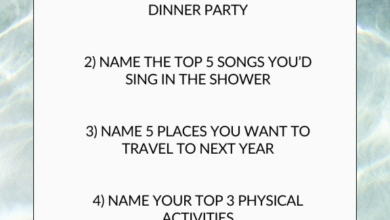Night Hag: The Dark Figure of Sleep and Folklore Explained
If you’ve ever woken up in the middle of the night feeling completely paralyzed, unable to move or speak, with a crushing weight on your chest and a terrifying presence looming nearby—congrats (or condolences), you’ve likely met the night hag.
The night hag isn’t your average bedtime story monster. This creepy figure has haunted cultures around the world for centuries, showing up in myths, superstitions, and even modern sleep studies. But is she a real supernatural entity? A figment of the human mind? Or something in between?
Let’s explore the mysterious world of the night hag, breaking down where she comes from, what she means, and how she still shows up in our lives today—sometimes quite literally while we sleep.
What Is the Night Hag?
At its most basic, the term night hag refers to a supernatural creature or entity believed to appear during the night, usually when a person is in bed. The classic encounter involves a person waking up paralyzed, often lying on their back, feeling a sense of pressure on their chest, and sensing or seeing a terrifying female presence—the hag—hovering or sitting on top of them.
This phenomenon is often described with:
- The inability to move or speak
- A deep sense of dread or fear
- Hallucinations of a figure in the room, sometimes sitting on the chest
- Difficulty breathing, often described as feeling like you’re being crushed or suffocated
This experience is so widespread that nearly every culture has a version of it—and almost all describe it as some form of paranormal attack. Before science stepped in, people didn’t talk about “sleep paralysis”—they talked about being hag-ridden.
Night Hags Around the World: Cultural Variations
What’s fascinating is how universal the night hag experience is. Across continents and centuries, people have told stories that sound eerily similar. Let’s look at some of the cultural takes on this dark, dreamlike figure.
1. European Folklore: The Hag Rides at Night
In old English and Irish folklore, people believed that witches or hags would ride people’s chests at night, sapping their life energy. The term “hag-ridden” even shows up in Shakespeare and old medical texts. People would leave herbs or iron by the bed to ward off the hag.
In Scandinavian countries, the night haghttps://dumpstatadventures.com/blog/deep-dive-the-hag was called Mara, a malicious spirit who caused nightmares (the word “nightmare” literally comes from this). She would press down on sleepers, making it hard to breathe or wake.
2. Japan: Kanashibari
In Japanese folklore, the condition is called kanashibari, which loosely translates to “bound in metal”—a reference to the immobilization that comes with sleep paralysis. Japanese tales often involve spirits or yūrei (ghosts) hovering above the sleeper.
3. African and Caribbean Folklore
In parts of the Caribbean, especially in Haitian and Jamaican culture, the night hag is often called “Old Higue” or “Sukuyan”—a vampire-like witch who sucks people’s life force while they sleep. These spirits are deeply feared and linked to soul-stealing.
In African folklore, particularly among the Yoruba, similar spirits may be involved with witchcraft or possession, appearing during the night to torment or influence dreams.
4. South and Southeast Asia
In Thailand, Cambodia, and Laos, there’s a belief in spirits that attack during sleep, especially those who break spiritual taboos. People may sleep with sacred objects or perform rituals to protect themselves from such attacks.
It’s remarkable how many of these tales mirror one another: a female entity, nocturnal visits, a paralyzing presence, and fear-inducing hallucinations. Could they all be describing the same thing in different cultural language?
The Science Behind the Night Hag: Sleep Paralysis Explained
As terrifying as the night hag experience is, science has a very different explanation. What many describe as a supernatural attack is actually a well-documented phenomenon called sleep paralysis.
What Is Sleep Paralysis?
Sleep paralysis happens during transitions between sleep stages, especially from REM (Rapid Eye Movement) sleep into wakefulness. During REM sleep, your body naturally paralyzes your muscles to prevent you from acting out dreams. But sometimes your brain wakes up before your body does, leaving you conscious but unable to move.
Why Does It Feel So Real?
During sleep paralysis, people may still be in a dream-like state, even while awake. This is called a hypnopompic hallucination. That’s why it feels like there’s something in the room or on top of you—it’s your dream bleeding into reality.
The pressure on the chest? That’s partly a side effect of shallow breathing during REM sleep. The sense of terror? It’s likely caused by a rush of adrenaline and confusion from being stuck between sleep and wakefulness.
It doesn’t help that the human brain is wired to recognize faces and figures in the dark, especially in high-stress situations. Evolutionarily, it made sense to be hyper-alert at night—but it’s not so helpful when you’re just trying to sleep and not be strangled by a phantom crone.
Why the Night Hag Lingers in Popular Culture
Even with scientific explanations, the night hag hasn’t gone away. In fact, she’s more popular than ever—in horror movies, books, and paranormal shows. But why?
Archetypal Fear
The hag plays on some of our deepest human fears: helplessness, invasion, suffocation, and the unknown. She represents a primal anxiety, one that can’t be explained away entirely by science. That’s why even skeptics can be rattled by a vivid night hag experience.
Misunderstood Femininity
There’s also an element of gendered fear. The hag, like the witch or crone, is a female figure associated with power and mystery, and therefore, historically, with fear. She’s old, not beautiful; strong, not nurturing; independent, not obedient. That makes her both fascinating and threatening in patriarchal storytelling traditions.
Artistic and Psychological Symbolism
In literature and film, the night hag becomes a metaphor for mental illness, trauma, guilt, or even spiritual awakening. Think of her as the shadow figure, the Jungian archetype that surfaces when you’re forced to face your inner fears or repressed memories.
How to Protect Yourself From the Night Hag
Whether you believe in the spiritual side or lean toward the scientific explanation, nobody wants to experience sleep paralysis regularly. Here are some practical and traditional methods people use to avoid the hag’s nightly visit.
1. Improve Sleep Hygiene
- Stick to a regular sleep schedule
- Avoid caffeine and heavy meals before bed
- Don’t sleep on your back (many sleep paralysis episodes happen in this position)
- Manage stress with breathing exercises or meditation
2. Spiritual Practices
In cultures that believe the night hag is a spiritual attacker, people often:
- Place protective charms or talismans under their pillows
- Use salt, iron, or herbs like mugwort and sage near the bed
- Recite prayers or chants before sleep
- Burn incense or light candles to purify the space
Whether it’s superstition or self-soothing, these rituals help people feel more in control—and that alone can reduce the likelihood of an episode.
3. Know What’s Happening
Sometimes, the best weapon against fear is knowledge. Understanding what sleep paralysis is can reduce the panic when it happens. Telling yourself, “This is sleep paralysis, it’ll pass,” can be enough to stop the episode from spiraling into full-blown terror.
Final Thoughts: The Night Hag Lives On
So, what is the night hag—a demon, a myth, a sleep disorder? The truth is, she’s a little bit of all three. She’s a piece of cultural history, a psychological phenomenon, and a deeply personal experience for millions of people across time and space.
Even with science offering explanations, the night hag remains a powerful symbol of vulnerability, mystery, and fear. And maybe that’s why she still lingers—not just in our folklore, but in the corner of the room, just out of sight, waiting for the moment when your body is asleep and your eyes suddenly open.
Night Hag: The Dark Figure of Sleep and Folklore Explained
If you’ve ever woken up in the middle of the night feeling completely paralyzed, unable to move or speak, with a crushing weight on your chest and a terrifying presence looming nearby—congrats (or condolences), you’ve likely met the night hag.
The night hag isn’t your average bedtime story monster. This creepy figure has haunted cultures around the world for centuries, showing up in myths, superstitions, and even modern sleep studies. But is she a real supernatural entity? A figment of the human mind? Or something in between?
Let’s explore the mysterious world of the night hag, breaking down where she comes from, what she means, and how she still shows up in our lives today—sometimes quite literally while we sleep.
What Is the Night Hag?
At its most basic, the term night hag refers to a supernatural creature or entity believed to appear during the night, usually when a person is in bed. The classic encounter involves a person waking up paralyzed, often lying on their back, feeling a sense of pressure on their chest, and sensing or seeing a terrifying female presence—the hag—hovering or sitting on top of them.
This phenomenon is often described with:
- The inability to move or speak
- A deep sense of dread or fear
- Hallucinations of a figure in the room, sometimes sitting on the chest
- Difficulty breathing, often described as feeling like you’re being crushed or suffocated
This experience is so widespread that nearly every culture has a version of it—and almost all describe it as some form of paranormal attack. Before science stepped in, people didn’t talk about “sleep paralysis”—they talked about being hag-ridden.
Night Hags Around the World: Cultural Variations
What’s fascinating is how universal the night hag experience is. Across continents and centuries, people have told stories that sound eerily similar. Let’s look at some of the cultural takes on this dark, dreamlike figure.
1. European Folklore: The Hag Rides at Night
In old English and Irish folklore, people believed that witches or hags would ride people’s chests at night, sapping their life energy. The term “hag-ridden” even shows up in Shakespeare and old medical texts. People would leave herbs or iron by the bed to ward off the hag.
In Scandinavian countries, the night hag was called Mara, a malicious spirit who caused nightmares (the word “nightmare” literally comes from this). She would press down on sleepers, making it hard to breathe or wake.
2. Japan: Kanashibari
In Japanese folklore, the condition is called kanashibari, which loosely translates to “bound in metal”—a reference to the immobilization that comes with sleep paralysis. Japanese tales often involve spirits or yūrei (ghosts) hovering above the sleeper.
3. African and Caribbean Folklore
In parts of the Caribbean, especially in Haitian and Jamaican culture, the night hag is often called “Old Higue” or “Sukuyan”—a vampire-like witch who sucks people’s life force while they sleep. These spirits are deeply feared and linked to soul-stealing.
In African folklore, particularly among the Yoruba, similar spirits may be involved with witchcraft or possession, appearing during the night to torment or influence dreams.
4. South and Southeast Asia
In Thailand, Cambodia, and Laos, there’s a belief in spirits that attack during sleep, especially those who break spiritual taboos. People may sleep with sacred objects or perform rituals to protect themselves from such attacks.
It’s remarkable how many of these tales mirror one another: a female entity, nocturnal visits, a paralyzing presence, and fear-inducing hallucinations. Could they all be describing the same thing in different cultural language?
The Science Behind the Night Hag: Sleep Paralysis Explained
As terrifying as the night hag experience is, science has a very different explanation. What many describe as a supernatural attack is actually a well-documented phenomenon called sleep paralysis.
What Is Sleep Paralysis?
Sleep paralysis happens during transitions between sleep stages, especially from REM (Rapid Eye Movement) sleep into wakefulness. During REM sleep, your body naturally paralyzes your muscles to prevent you from acting out dreams. But sometimes your brain wakes up before your body does, leaving you conscious but unable to move.
Why Does It Feel So Real?
During sleep paralysis, people may still be in a dream-like state, even while awake. This is called a hypnopompic hallucination. That’s why it feels like there’s something in the room or on top of you—it’s your dream bleeding into reality.
The pressure on the chest? That’s partly a side effect of shallow breathing during REM sleep. The sense of terror? It’s likely caused by a rush of adrenaline and confusion from being stuck between sleep and wakefulness.
It doesn’t help that the human brain is wired to recognize faces and figures in the dark, especially in high-stress situations. Evolutionarily, it made sense to be hyper-alert at night—but it’s not so helpful when you’re just trying to sleep and not be strangled by a phantom crone.
Why the Night Hag Lingers in Popular Culture
Even with scientific explanations, the night hag hasn’t gone away. In fact, she’s more popular than ever—in horror movies, books, and paranormal shows. But why?
Archetypal Fear
The hag plays on some of our deepest human fears: helplessness, invasion, suffocation, and the unknown. She represents a primal anxiety, one that can’t be explained away entirely by science. That’s why even skeptics can be rattled by a vivid night hag experience.
Misunderstood Femininity
There’s also an element of gendered fear. The hag, like the witch or crone, is a female figure associated with power and mystery, and therefore, historically, with fear. She’s old, not beautiful; strong, not nurturing; independent, not obedient. That makes her both fascinating and threatening in patriarchal storytelling traditions.
Artistic and Psychological Symbolism
In literature and film, the night hag becomes a metaphor for mental illness, trauma, guilt, or even spiritual awakening. Think of her as the shadow figure, the Jungian archetype that surfaces when you’re forced to face your inner fears or repressed memories.
How to Protect Yourself From the Night Hag
Whether you believe in the spiritual side or lean toward the scientific explanation, nobody wants to experience sleep paralysis regularly. Here are some practical and traditional methods people use to avoid the hag’s nightly visit.
1. Improve Sleep Hygiene
- Stick to a regular sleep schedule
- Avoid caffeine and heavy meals before bed
- Don’t sleep on your back (many sleep paralysis episodes happen in this position)
- Manage stress with breathing exercises or meditation
2. Spiritual Practices
In cultures that believe the night hag is a spiritual attacker, people often:
- Place protective charms or talismans under their pillows
- Use salt, iron, or herbs like mugwort and sage near the bed
- Recite prayers or chants before sleep
- Burn incense or light candles to purify the space
Whether it’s superstition or self-soothing, these rituals help people feel more in control—and that alone can reduce the likelihood of an episode.
3. Know What’s Happening
Sometimes, the best weapon against fear is knowledge. Understanding what sleep paralysis is can reduce the panic when it happens. Telling yourself, “This is sleep paralysis, it’ll pass,” can be enough to stop the episode from spiraling into full-blown terror.
Final Thoughts: The Night Hag Lives On
So, what is the night hag—a demon, a myth, a sleep disorder? The truth is, she’s a little bit of all three. She’s a piece of cultural history, a psychological phenomenon, and a deeply personal experience for millions of people across time and space.
Even with science offering explanations, the night hag remains a powerful symbol of vulnerability, mystery, and fear. And maybe that’s why she still lingers—not just in our folklore, but in the corner of the room, just out of sight, waiting for the moment when your body is asleep and your eyes suddenly open.



